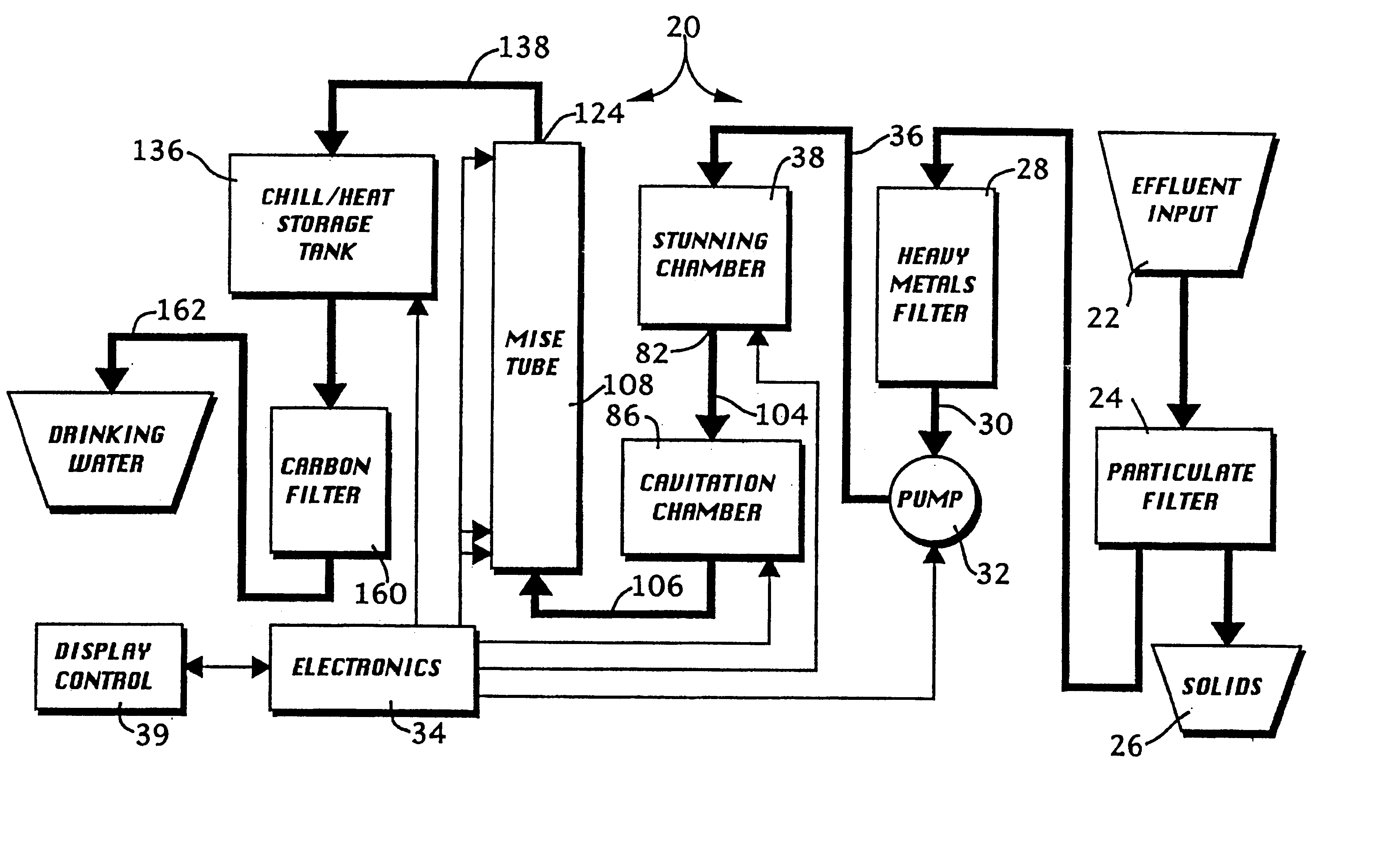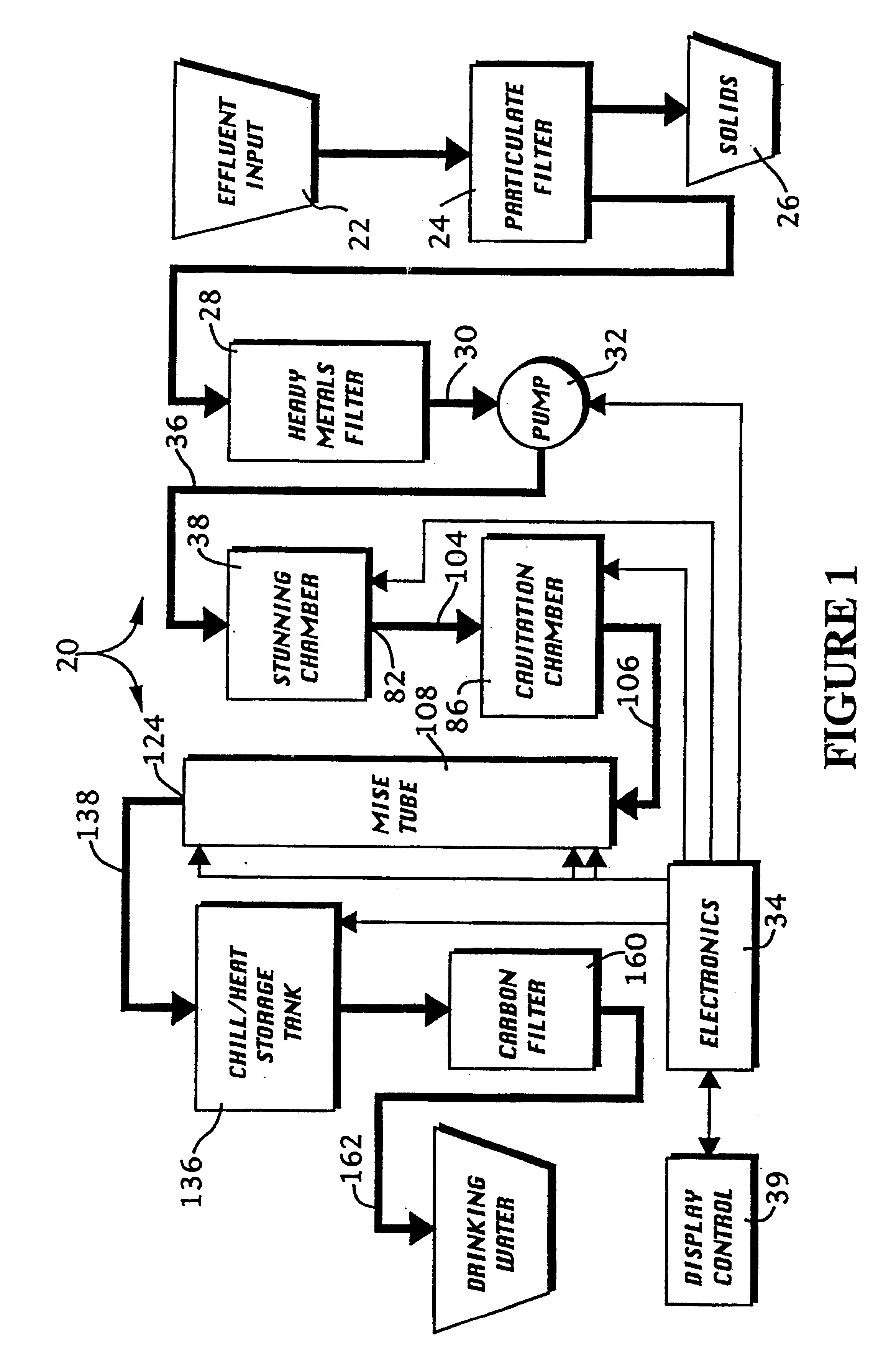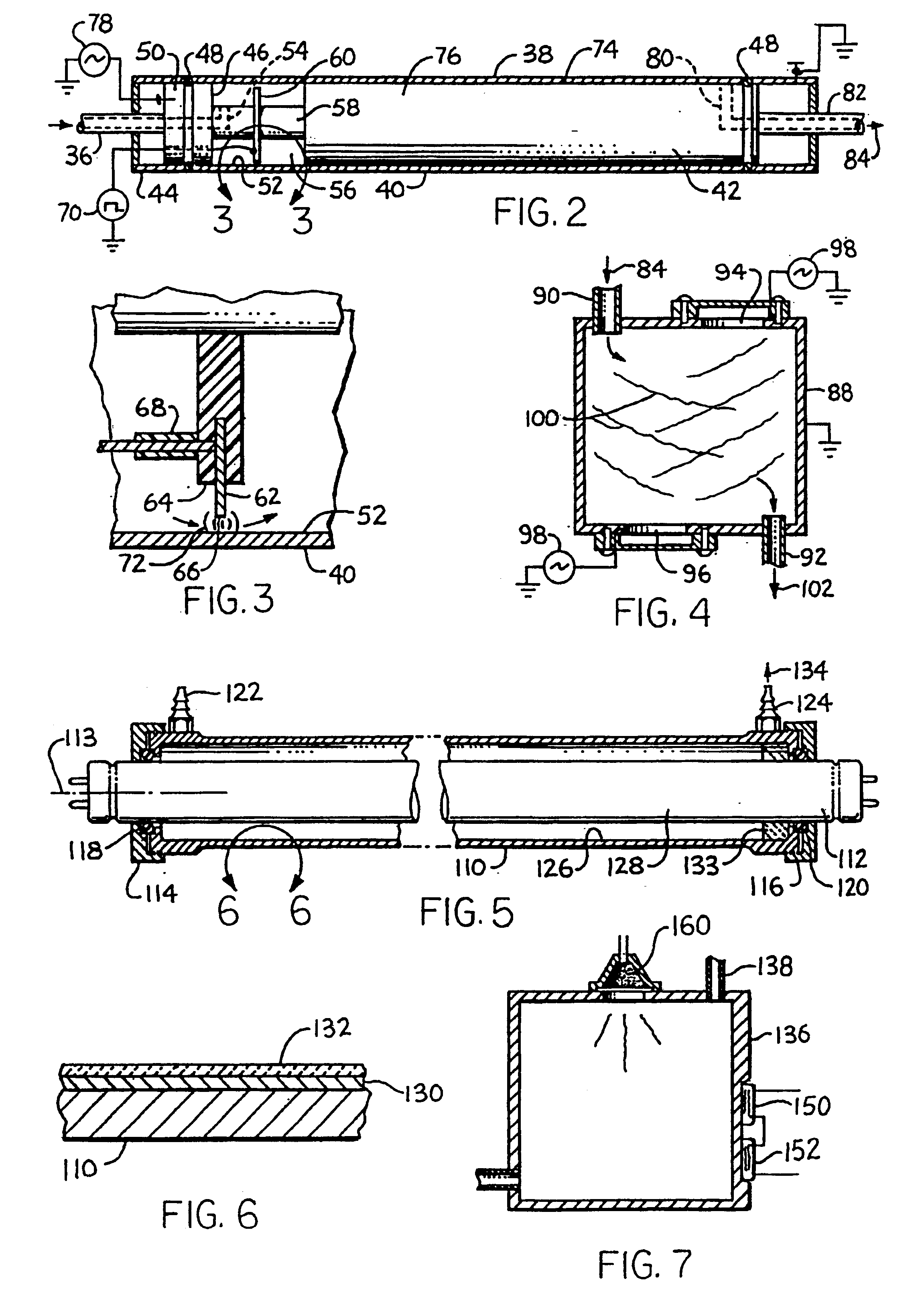Biological decontamination system
a technology of biological decontamination and system, applied in the direction of multi-stage water/sewage treatment, mechanical vibration separation, filtration treatment, etc., to achieve the effect of convenient manufacturing, long service life and relatively economical manufacturing and operation
- Summary
- Abstract
- Description
- Claims
- Application Information
AI Technical Summary
Benefits of technology
Problems solved by technology
Method used
Image
Examples
Embodiment Construction
Referring to the drawings more particularly by reference numbers, number 20 in FIG. 1 refers to a water treatment system for producing drinking water from a affluent input 22 of water of an unknown pollution level. In the system 20 the input 22 may be everything to questionably potable water to a combination of raw sewage and pond scum. Therefore, the input 22 is passed through a particulate filter 24 to remove larger solids primarily to keep them from clogging the flow passages within the system 20. This separates the solids 26 from the water flow. Filter 24 can be any of a number of commercially available filters including a Crane model 1-09-450 filter.
Many input water streams are polluted with other than organic contaminants. Therefore, means such a heavy metals filter or other devices commonly used to remove inorganic contaminants is provided. The output flow 30 from the heavy metals filter 28 provides the input to the organic decontamination portion of the system 20.
The flow 30...
PUM
 Login to View More
Login to View More Abstract
Description
Claims
Application Information
 Login to View More
Login to View More - R&D
- Intellectual Property
- Life Sciences
- Materials
- Tech Scout
- Unparalleled Data Quality
- Higher Quality Content
- 60% Fewer Hallucinations
Browse by: Latest US Patents, China's latest patents, Technical Efficacy Thesaurus, Application Domain, Technology Topic, Popular Technical Reports.
© 2025 PatSnap. All rights reserved.Legal|Privacy policy|Modern Slavery Act Transparency Statement|Sitemap|About US| Contact US: help@patsnap.com



